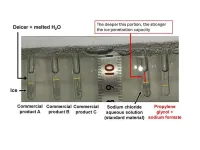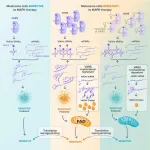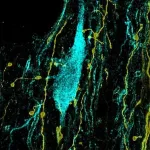(Press-News.org) Neurons communicate electrically so to understand how they produce brain functions such as memory, neuroscientists must track how their voltage changes—sometimes subtly—on the timescale of milliseconds. In a new paper in Nature Communications, MIT researchers describe a novel image sensor with the capability to substantially increase that ability.
The invention led by Jie Zhang, a postdoctoral scholar in The Picower Institute for Learning and Memory lab of Sherman Fairchild Professor Matt Wilson, is a new take on the standard “CMOS” technology used in scientific imaging. In that standard approach, all pixels turn on and off at the same time—a configuration with an inherent trade-off in which fast sampling means capturing less light. The new chip enables each pixel’s timing to be controlled individually. That arrangement provides a “best of both worlds” in which neighboring pixels can essentially complement each other to capture all the available light without sacrificing speed.
In experiments described in the study, Zhang and Wilson’s team demonstrates how “pixelwise” programmability enabled them to improve visualization of neural voltage “spikes,” which are the signals neurons use to communicate with each other, and even the more subtle, momentary fluctuations in their voltage that constantly occur between those spiking events.
“Measuring with single-spike resolution is really important as part of our research approach,” said senior author Wilson, a Professor in MIT’s Departments of Biology and Brain and Cognitive Sciences (BCS), whose lab studies how the brain encodes and refines spatial memories both during wakeful exploration and during sleep. “Thinking about the encoding processes within the brain, single spikes and the timing of those spikes is important in understanding how the brain processes information.”
For decades Wilson has helped to drive innovations in the use of electrodes to tap into neural electrical signals in real-time, but like many researchers he has also sought visual readouts of electrical activity because they can highlight large areas of tissue and still show which exact neurons are electrically active at any given moment. Being able to identify which neurons are active can enable researchers to learn which types of neurons are participating in memory processes, providing important clues about how brain circuits work.
In recent years, neuroscientists including co-senior author Ed Boyden, Y. Eva Tan Professor of Neurotechnology in BCS and The McGovern Institute for Brain Research and a Picower Institute affiliate, have worked to meet that need by inventing “genetically encoded voltage indicators” (GEVIs), that make cells glow as their voltage changes in real-time. But as Zhang and Wilson have tried to employ GEVIs in their research, they’ve found that conventional CMOS image sensors were missing a lot of the action. If they operated too fast, they wouldn’t gather enough light. If they operated too slow, they’d miss rapid changes.
But image sensors have such fine resolution that many pixels are really looking at essentially the same place on the scale of a whole neuron, Wilson said. Recognizing that there was resolution to spare, Zhang applied his expertise in sensor design to invent an image sensor chip that would enable neighboring pixels to each have their own timing. Faster ones could capture rapid changes. Slower-working ones could gather more light. No action or photons would be missed. Zhang also cleverly engineered the required control electronics so they barely cut into the space available for light-sensitive elements on a pixels. This ensured the sensor’s high sensitivity under low light conditions, Zhang said.
Two demos
In the study the researchers demonstrated two ways in which the chip improved imaging of voltage activity of mouse hippocampus neurons cultured in a dish. They ran their sensor head-to-head against an industry standard scientific CMOS image sensor chip.
In the first set of experiments the team sought to image the fast dynamics of neural voltage. On the conventional CMOS chip, each pixel had a zippy 1.25 millisecond exposure time. On the pixel-wise sensor each pixel in neighboring groups of four stayed on for 5 milliseconds, but their start times were staggered so that each one turned on and off 1.25 seconds later than the next. In the study, the team shows that each pixel, because it was on longer, gathered more light but because each one was capturing a new view every 1.25 milliseconds, it was equivalent to simply having a fast temporal resolution. The result was a doubling of the signal-to-noise ratio for the pixelwise chip. This achieves high temporal resolution at a fraction of the sampling rate compared to conventional CMOS chips, Zhang said.
Moreover, the pixelwise chip detected neural spiking activities that the conventional sensor missed. And when the researchers compared the performance of each kind of sensor against the electrical readings made with a traditional patch clamp electrode, they found that the staggered pixelwise measurements better matched that of the patch clamp.
In the second set of experiments, the team sought to demonstrate that the pixelwise chip could capture both the fast dynamics and also the slower, more subtle “subthreshold” voltage variances neurons exhibit. To do so they varied the exposure durations of neighboring pixels in the pixelwise chip, ranging from 15.4 milliseconds down to just 1.9 milliseconds. In this way, fast pixels sampled every quick change (albeit faintly), while slower pixels integrated enough light over time to track even subtle slower fluctuations. By integrating the data from each pixel, the chip was indeed able to capture both fast spiking and slower subthreshold changes, the researchers reported.
The experiments with small clusters of neurons in a dish was only a proof-of concept, Wilson said. His lab’s ultimate goal is to conduct brain-wide, real-time measurements of activity in distinct types of neurons in animals even as they are freely moving about and learning how to navigate mazes. The development of GEVIs and of image sensors like the pixelwise chip that can successfully take advantage of what they show is crucial to making that goal feasible.
“That’s the idea of everything we want to put together: large-scale voltage imaging of genetically tagged neurons in freely behaving animals,” Wilson said.
To achieve this, Zhang added, “We are already working on the next iteration of chips with lower noise, higher pixel counts, time-resolution of multiple kHz, and small form factors for imaging in freely behaving animals.”
The research is advancing pixel by pixel.
In addition to Zhang, Wilson and Boyden the paper’s other authors are Jonathan Newman, Zeguan Wang, Yong Qian, Pedro Feliciano-Ramos, Wei Guo, Takato Honda, Zhe Sage Chen, Changyang Linghu, Ralph-Etienne Cummings, and Eric Fossum.
The Picower Institute for Learning and Memory, The JPB Foundation, the Alana Foundation, The Louis B. Thalheimer Fund for Translational Research, the National Institutes of Health, HHMI, Lisa Yang and John Doerr provided support for the research.
END
With programmable pixels, novel sensor improves imaging of neural activity
New camera chip design allows for optimizing each pixel’s timing to maximize signal to noise ratio when tracking real-time visual indicator of neural voltage
2024-06-07
ELSE PRESS RELEASES FROM THIS DATE:
Frozen? Let it melt with efficient new deicer friendly to the environment
2024-06-07
The dangers of frozen roads, airplane engines, and runways are well known, but the use of commercial products often means short-term safety over long-term environmental degradation. Seeking a better product, Osaka Metropolitan University researchers have developed a deicing mixture offering higher performance than deicers on the market while also having less impact on the environment.
The team, made up of graduate student Kai Ito, Assistant Professor Arisa Fukatsu, Associate Professor Kenji Okada, and Professor Masahide Takahashi of the Graduate School of Engineering, used machine learning to analyze ice melting mechanisms of aqueous solutions of 21 salts and 16 organic ...
Aging speeds up and lifetime becomes shorter in animals whose cells ‘believe’ to have too many nutrients, despite following a normal diet
2024-06-07
Cells are signalled to have nutrients in excess, and this leads to malfunction and inflammation in organs such as the pancreas, the liver and the kidneys.
The finding, by CNIO researchers, are published in Nature Aging. It suggests that an intervention on the inflammation alone can relieve symptoms and increase survival.
The research has been conducted on animal models, but comparing their molecular processes with blood samples from people in their seventies indicates that they can be extrapolated to human aging.
The reality of a population who is ageing at an accelerated rate makes it a priority to understand what happens in the body over time, ...
Transfer RNAs at the heart of therapeutic resistance
2024-06-07
An international research team led by scientists from the University of Liège has discovered an interesting new therapeutic target for the treatment of melanoma resistant to targeted therapies. Inhibition of the VARS enzyme could prevent this therapeutic resistance by resensitising tumours resistant to these targeted therapies.
Melanoma is one of the most serious and aggressive forms of skin cancer. When diagnosed early, melanoma is surgically removed. However, once metastases (i.e. secondary distant tumours) have developed, ...
Brain circuits underlying learning from negative experiences
2024-06-07
‘I’m not gonna do this again’, we often say when faced with negative feedback, adverse effects, or disappointing outcomes. Thus, we attempt to learn from such negative experiences. This principle is also a cornerstone of our education system: failing an exam ought to encourage students to do better next time.
How does the brain achieve this type of learning? Positive and negative reinforcement appear as two sides of the same coin in parts of the brain’s valuation system. Notably, some neurons that release the neuromodulator ‘dopamine’ represent outcomes better vs. worse ...
What’s going on in our brains when we plan?
2024-06-07
In pausing to think before making an important decision, we may imagine the potential outcomes of different choices we could make. While this “mental simulation” is central to how we plan and make decisions in everyday life, how the brain works to accomplish this is not well understood.
An international team of scientists has now uncovered neural mechanisms used in planning. Its results, published in the journal Nature Neuroscience, suggest that an interplay between the brain’s prefrontal cortex and hippocampus allows us to imagine future outcomes in order to guide our decisions.
“The prefrontal cortex acts as a ‘simulator,’ ...
Robotic device restores wavelike muscular function involved in processes like digestion, aiding patients with compromised organs
2024-06-07
A team of Vanderbilt researchers has developed a wirelessly activated device that mimics the wavelike muscular function in the esophagus and small intestine responsible for transporting food and viscous fluids for digestion.
The soft-robotic prototype, which is driven by strong magnets controlled by a wearable external actuator, can aid patients suffering from blockages caused by tumors or those requiring stents. For example, traditional esophageal stents are metal tubes used in patients with esophageal cancer, mostly in an aging population. These patients risk food being blocked from entering the stomach, potentially ...
DOE announces new decadal fusion energy strategy
2024-06-07
WASHINGTON, D.C.—The U.S. Department of Energy (DOE) today marked the two-year anniversary of the Biden-Harris Administration's launch of the U.S. Bold Decadal Vision for Commercial Fusion Energy with the release of the DOE Fusion Energy Strategy 2024 and an event at the White House co-hosted by the White House Office of Science and Technology Policy.
At the inaugural event where the Bold Decadal Vision was unveiled, DOE launched a Department-wide initiative to develop a strategy for accelerating the viability of commercial fusion energy in partnership with the private sector. The newly released DOE Fusion Energy ...
Study identifies potential pathway to reducing breast cancer brain metastases
2024-06-07
A study led by researchers from the University of Arizona Cancer Center at UArizona Health Sciences identified a biological mechanism that could lead to more effective treatments for breast cancer that has metastasized to the brain.
By studying the metabolic differences between primary breast cancer cells and those that metastasize to the brain, they determined that autophagy was significantly upregulated in brain metastases. Autophagy is a cellular recycling process that cancer cells can use to stay alive when faced with stressful conditions such as those triggered by anticancer drugs.
“The prognosis for individuals with ...
How does oxygen depletion disrupt memory formation in the brain?
2024-06-07
When we learn something new, our brain cells (neurons) communicate with each other through electrical and chemical signals. If the same group of neurons communicate together often, the connections between them get stronger. This process helps our brains learn and remember things and is known as long-term potentiation or LTP.
Another type of LTP occurs when the brain is deprived of oxygen temporarily – anoxia-induced long-term potentiationor aLTP. aLTP blocks the former process, thereby impairing learning and ...
Study investigates relationship between phthalate exposure and high blood pressure, related complications during pregnancy
2024-06-07
Higher exposure to certain chemicals called phthalates is linked to an increased risk of pregnancy complications, including preeclampsia and eclampsia (PE/E) and other hypertensive or high blood pressure disorders, according to a study funded by the NIH Environmental influences on Child Health Outcomes program. Here are the key findings:
Doubling the levels of a specific molecule linked to exposure to phthalates found in PVC plastics and insect repellents—mono (3-carboxypropyl) phthalate (MCPP)—increased ...
LAST 30 PRESS RELEASES:
Air pollution exposure and birth weight
Obstructive sleep apnea risk and mental health conditions among older adults
How talking slows eye movements behind the wheel
The Ceramic Society of Japan’s Oxoate Ceramics Research Association launches new international book project
Heart-brain connection: international study reveals the role of the vagus nerve in keeping the heart young
Researchers identify Rb1 as a predictive biomarker for a new therapeutic strategy in some breast cancers
Survey reveals ethical gaps slowing AI adoption in pediatric surgery
Stimulant ADHD medications work differently than thought
AI overestimates how smart people are, according to HSE economists
HSE researchers create genome-wide map of quadruplexes
Scientists boost cell "powerhouses" to burn more calories
Automatic label checking: The missing step in making reliable medical AI
Low daily alcohol intake linked to 50% heightened mouth cancer risk in India
American Meteorological Society announces Rick Spinrad as 2026 President-Elect
Biomass-based carbon capture spotlighted in newly released global climate webinar recording
Illuminating invisible nano pollutants: advanced bioimaging tracks the full journey of emerging nanoscale contaminants in living systems
How does age affect recovery from spinal cord injury?
Novel AI tool offers prognosis for patients with head and neck cancer
Fathers’ microplastic exposure tied to their children’s metabolic problems
Research validates laboratory model for studying high-grade serous ovarian cancer
SIR 2026 delivers transformative breakthroughs in minimally invasive medicine to improve patient care
Stem Cell Reports most downloaded papers of 2025 highlight the breadth and impact of stem cell research
Oxford-led study estimates NHS spends around 3% of its primary and secondary care budget on the health impacts of heat and cold in England
A researcher’s long quest leads to a smart composite breakthrough
Urban wild bees act as “microbial sensors” of city health.
New study finds where you live affects recovery after a hip fracture
Forecasting the impact of fully automated vehicle adoption on US road traffic injuries
Alcohol-related hospitalizations from 2016 to 2022
Semaglutide and hospitalizations in patients with obesity and established cardiovascular disease
Researchers ‘listen in’ to embryo-mother interactions during implantation using a culture system replicating the womb lining
[Press-News.org] With programmable pixels, novel sensor improves imaging of neural activityNew camera chip design allows for optimizing each pixel’s timing to maximize signal to noise ratio when tracking real-time visual indicator of neural voltage






